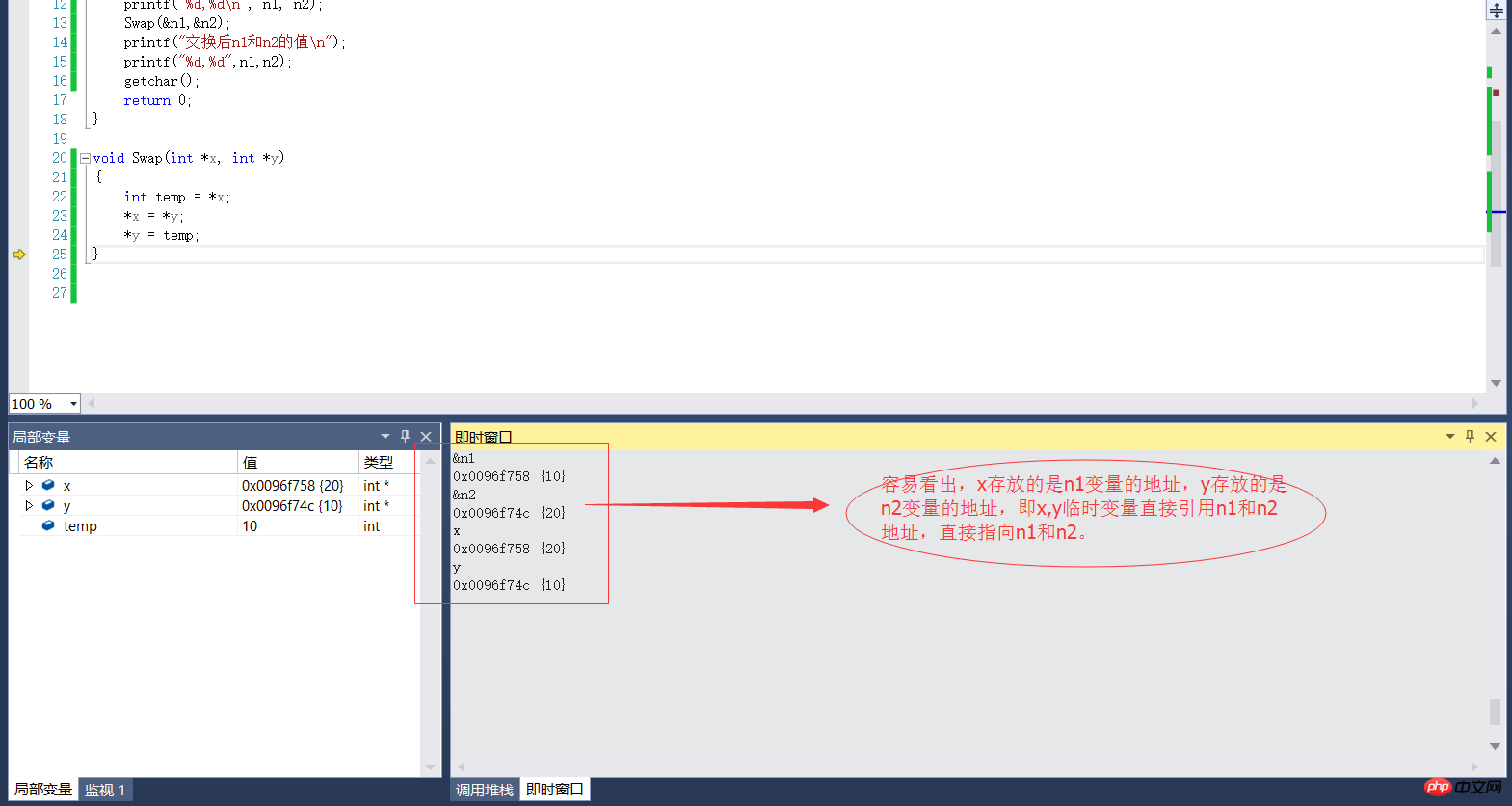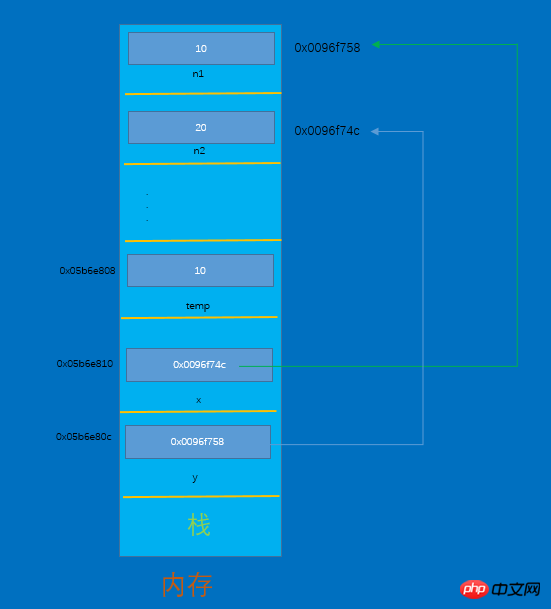
This article mainly introduces the relevant knowledge of out and ref. It has a certain reference value. Let’s take a look at it with the editor.
In order to fully understand C# out and ref, you must first clarify the following two concepts ( If you have a good grasp of value types and reference types, you can skip "1. Clarify two basic concepts")
1. Clarify two basic concepts
Value type:
Definition: Passed by value, that is, the actual parameters are passed to the formal parameters (the terms formal parameters and actual parameters are not defined here).
Storage method: Mainly in the stack.
Essence: Implemented through value transfer, copycopy form, and the Pop() and Push() methods of the call stack.
Common types: int, float, bool, enum, struct, Array, etc.
Value type example:
//主函数
static void Main(string[] args)
{
//定义两个实参n1和n2,并初始化
int n1 = 10, n2 = 20;
Console.WriteLine("交换前n1和n2的值");
Console.WriteLine("n1={0},n2={1}", n1, n2);//n1=10,n2=20
Swap(n1,n2);
Console.WriteLine("交换后n1和n2的值");
Console.WriteLine("n1={0},n2={1}",n1,n2);//n1=10,n2=20
Console.Read();
}
/// <summary>
/// 交换两个变量的值
/// </summary>
/// <param name="n1">形参n1</param>
/// <param name="n2">形参n2</param>
static private void Swap(int t1,int t2)
{
int temp;
temp =t1;
t1 =t2;
t2 = temp;
}Analysis: The above code is passed by value. After exchanging the two variables, the values of n1 and n2 are not changed. The fundamental reason is that the value is passed through copy. Copy form without changing the original value. The picture is as follows:
1) Define variables n1 and n2, and initialize the variables. The representation in memory is roughly as follows (int n1 = 10, n2 = 20;)
CodeDebugging

is represented in memory

2) When executing the exchange variable method
Code debugging


Represented in memory

Exchange detailed steps diagram

Reference type:
Definition: Passed by address, such as a pointer in c++. In layman's terms, just think of the address as the key to the door.
Storage method: Mainly stored in the heap.
Essence: Passed by address, shared variables, one change, all changes.
Common types: String, Object, etc.
code:c++
// Cpplus.cpp : 定义控制台应用程序的入口点。
//
#include "stdafx.h"
//主函数
int _tmain(int argc, _TCHAR* argv[])
{
void Swap(int *x, int *y);
int n1 = 10, n2 = 20;
printf("交换前n1和n2的值\n");
printf("%d,%d\n", n1, n2);
Swap(&n1,&n2);
printf("交换后n1和n2的值\n");
printf("%d,%d",n1,n2);
getchar();
return 0;
}
//交换函数
void Swap(int *x, int *y)
{
int temp = *x;
*x = *y;
*y = temp;
}result:




2. Why are out and ref introduced
It can be seen from the above analysis that value transfer It is impossible to change the value of a variable. What should I do if I want to change the value of a variable like C++?c#Introduced out and ref to solve this problem. Therefore, both out and ref are reference types.
2. Detailed explanation of out
In one sentence: out can only enter but not exit.//主函数
static void Main(string[] args)
{
int n1, n2;
Console.WriteLine(GetSum(out n1,out n2));
Console.Read();
}
//out参数
static public int GetSum(out int numberFirst,out int numberSecond)
{
numberFirst = 10;
numberSecond = 3;
return numberFirst + numberSecond;
}
out Features:
1. Both method definition and method calling must use the out keyword. (The above code is obviously easy to see) 2. out only goes out but not in, that is, it has the function of clearing the external parameters of the method. (In the above code, readers can change the values of n1 and n2 arbitrarily. As long as the GetSum() method body is not changed, the output value is 13) 3. It is a reference type. (If you call it directly without defining n1 and n2 in advance, the compilation will not pass) 4. For functions with the same name, out does not exist with ref at the same time, and can beoverloaded.
//如下两个方法可以重载
public void getNumer(int num){}
public void setTime(out int num){num=10;}
//如下两个方法不能重载
public void getNumer(ref int num){num=10;}
public void setTime(out int num){num=10;}3. Detailed explanation of ref
In one sentence: what goes in, comes out.//主函数
static void Main(string[] args)
{
int n1=1, n2=3;
Console.WriteLine(refGetSum(ref n1,ref n2));
Console.Read();
}
//ref参数
static public int refGetSum(ref int numberFirst, ref int numberSecond)
{
numberFirst = 10;
numberSecond = 3;
return numberFirst + numberSecond;
}ref特点:
1、方法定义和调用方法都必须显示使用ref关键字。(如上代码显然易见)
2、ref有进有出,即可以把值传入方法体内。(如上代码,读者可以任意改变n1和n2的值)
3、为引用类型。(直接调用而不事先定义n1和n2,编译不通过)
4、同名函数,out不与ref同时存在,可以重载。
四、out与ref异同
主要区别,out只输出yuan'chuang,ref有进有出。
The above is the detailed content of Detailed introduction to the difference between out and ref in C# (picture and text). For more information, please follow other related articles on the PHP Chinese website!




